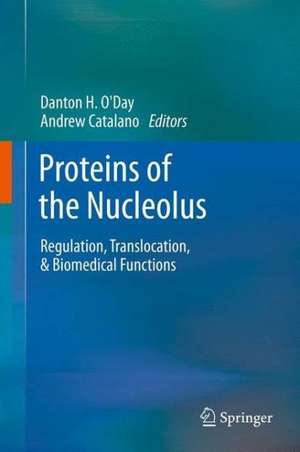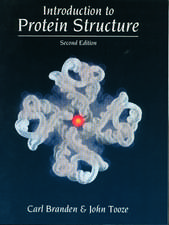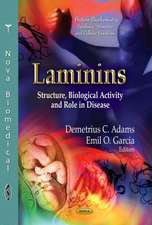Proteins of the Nucleolus: Regulation, Translocation, & Biomedical Functions
Editat de Danton H. O'Day, Andrew Catalanoen Limba Engleză Hardback – 9 mar 2013
| Toate formatele și edițiile | Preț | Express |
|---|---|---|
| Paperback (1) | 948.47 lei 6-8 săpt. | |
| SPRINGER NETHERLANDS – 12 apr 2015 | 948.47 lei 6-8 săpt. | |
| Hardback (1) | 959.98 lei 6-8 săpt. | |
| SPRINGER NETHERLANDS – 9 mar 2013 | 959.98 lei 6-8 săpt. |
Preț: 959.98 lei
Preț vechi: 1170.71 lei
-18% Nou
Puncte Express: 1440
Preț estimativ în valută:
183.75€ • 199.66$ • 154.45£
183.75€ • 199.66$ • 154.45£
Carte tipărită la comandă
Livrare economică 21 aprilie-05 mai
Preluare comenzi: 021 569.72.76
Specificații
ISBN-13: 9789400758179
ISBN-10: 9400758170
Pagini: 457
Ilustrații: VI, 371 p.
Dimensiuni: 155 x 235 x 20 mm
Greutate: 0.86 kg
Ediția:2013
Editura: SPRINGER NETHERLANDS
Colecția Springer
Locul publicării:Dordrecht, Netherlands
ISBN-10: 9400758170
Pagini: 457
Ilustrații: VI, 371 p.
Dimensiuni: 155 x 235 x 20 mm
Greutate: 0.86 kg
Ediția:2013
Editura: SPRINGER NETHERLANDS
Colecția Springer
Locul publicării:Dordrecht, Netherlands
Public țintă
ResearchCuprins
Part I Introduction.- Ch 1 Proteins of the nucleolus.- Part II The nucleolus and nucleolar proteins.- Ch 2 Functional consequences of nuclear and nucleolar architecture.- Ch 3 rDNA and nucleologenesis in Drosophila.- Ch 4 The nucleolus of Dictyostelium and other lower eukaryotes.- Ch 5 Human rDNA genes.- Ch 6 Chromatin organization and the mammalian nucleolus.- Ch 7 Chaperones and multitasking proteins in the nucleolus.- Ch 8 Nucleolar localization/retention signals.- Ch 9 Nucleolar transport of putative GTPase GNL1 and related proteins.- Ch 10 Nucleolar protein anchoring and translocation.- Ch 11 The nucleolus as a stress response organelle.- Ch 12 The nucleolar aspect of breast cancer.- Ch 13 Cysteine proteinase inhibitors in the nucleus and nucleolus in activated macrophages.- Ch 14 Nucleolar proteins and cancer.- Ch 15 Nucleolar transplantation and human embryogenesis.- Part V Conclusions.- Ch 16 The nucleolus from its formation to the future.
Textul de pe ultima copertă
This book contains 14 original review chapters each yielding new, exciting and intriguing data about the emerging understanding of nucleolar structure and function in normal, stressed and diseased cells. The goal of this work is to provide special insight into the nucleolus of the past, present and future, as well its regulation, translocation, and biomedical function. A multitude of topics are introduced and discussed in detail, including nucleologenesis, nucleolar architecture, nucleolar targeting, retention, anchoring, translocation, and the relationship between the nucleolus and cancer. This book also brings together work from several different species, from human to Drosophila to Dictyostelium and other eukaryotic microbes. The final chapter summarizes some of the issues brought up in the various chapters with a view to future research. This book supports the continued emergence of the nucleolus as a dynamic intranuclear region that oversees a vast diversity of events.
Caracteristici
A comprehensive overview of the diversity of nucleolar function Data presented comes from a wide spectrum of species Leading edge studies presented shed new light on nucleolar processes Biomedical aspects of nucleolar function are detailed













